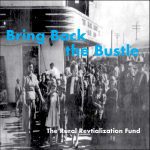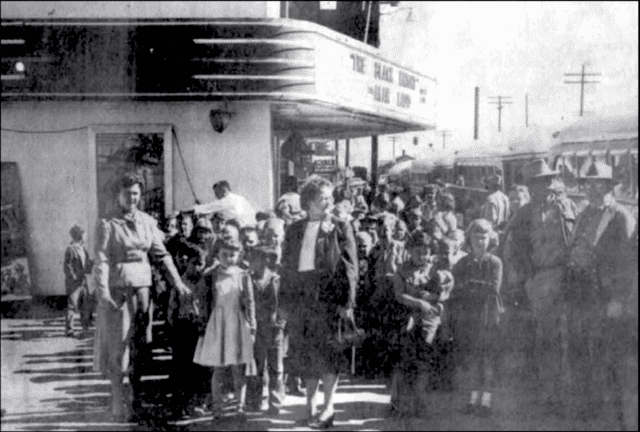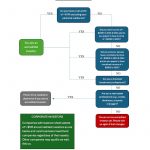
Welcome to the debut episode of Bring Back the Bustle, a podcast about Rural Revitalization. More specifically, it’s a podcast about how to make money revitalizing and serving rural communities. On this podcast, we will explore small town revival from the vantage points of all stakeholders including private investors, rural residents, AI companies, commercial property owners, and state, local and federal governments.
I, Shavon Jones, will be your tour guide. I am a co-founder of The Rural Revitalization Fund, a qualified rural opportunity zone fund that I sometimes refer to simply as The Rural Fund. I’m an administrative lawyer and a tax lawyer formerly of PwC. I’m expert at tax incentives. But more important than my technical background, I’ve lived in rural America and I’ve lived in big cities here in the States and abroad. That means I know what is available. I know both what’s great about rural America and what could be better. And so do the architects, financiers and real estate developers who are my co-founders, which is why we decided to create an investment vehicle to Bring Back the Bustle to rural communities.
History of Rural America
Younger adults may think there’s no “Bustle” to bring back. If you were born in the last 30 years, you have no first-hand recollection of a booming rural America. In fact, you’ve mostly heard rural America referred to as “fly-over country.” But rural America was welcoming, safe and active as recently as 30 years ago and was actually booming until the 70s or so. Most towns were propped up by one or more industries. Depending on how far you go back the industries were cotton, timber, automobiles, other manufacturing.
Spoiler Alert: in a few minutes I’m going to suggest a new industry that can once again prop up rural towns. But back to the history:
Around those timber businesses, car plants, and the like, entire communities sprung up to serve residents: churches, schools, movie theaters, restaurants, saloons, five and dime stores, civic centers, museums, public libraries, post offices, hospitals, inns and hotels, bus stations, railroad stations, the phone company, newspapers, TV stations, auto body shops, country lawyers, cops, the courthouse in the public square.
These entities made up the local economy and pretty much everyone in the economy was essential.
Then, the economy globalized and everything spiraled downward for rural America from there.
- America decided to lead in information and professional services.
- Manufacturing jobs were offshored to then-developing nations.
- Rural residents moved away to go to college or to work in cities where the services industries were concentrated.
- Domestic production lines went silent.
- As a result, their former workers no longer could support the community businesses that had been established to serve them.
- The businesses closed.
- No new tenants emerged. So their buildings fell into disrepair.
- The streets cracked and grass grew in the cracks and potholes formed with no tax base to pay for their repair.
- The town lights went dark; downtowns became ghost towns; some residential areas returned to a pre-development state.
- The people who were left behind became the butts of comedians’ jokes.
The condition appeared to be permanent.
The Age of Artificial Intelligence
There may be a way back, though. The AI Age, with all its potential hazards, could be a period of growth for both urban and rural areas. At this stage, in 2025, the AI industry is propping up an otherwise contracting global economy. Silicon Valley remains the center of technology. However, long-neglected rural areas throughout the U.S. and the world stand to benefit from the AI Boom. AI data centers that are too large for urban areas are popping up in rural ones.
And that beats the hell out of living someplace where no money is circulating and everyone with any ambition leaves after high school graduation.
Data Centers as Anchor Businesses
If managed properly, data centers can be a catalyst for a revival of rural America. The way that we develop around them is key. Data centers can be isolated buildings on the outskirts of deserted rural towns or they can be anchor businesses that revive rural towns. AI conglomerates and state and local governments have thus far shaped this relationship, but other players are getting into the game. At the federal level, the OBBBA has enhanced the ability of private investors to participate in rural revival in a way that can benefit local property owners and local residents. We’re going to talk a lot about this over the course of this podcast series. We’ll discuss all the incentives that make it possible for investors to make a lot of tax-free money rebuilding rural America.
We’re also going to lean into ways to use rural development to assimilate rather than re-segregate rural America. There is a danger of AI companies selecting an outpost and then building a self-contained community exclusively for themselves: their own captive fitness and recreation venues, hotels, epicurean markets, shopping boutiques, restaurants and the like where most locals won’t feel welcome.
If we allow that to happen we will miss the moment, miss the opportunity to revive rural America for everyone who lives there. Because when rural towns bustled it was local people doing business with their neighbors, employing their neighbors, recreating and socializing with their neighbors.
Before we here at the Rural Fund decide to invest in a community, we spend time in that community. And we’re noticing some trends that need to be arrested if we want rural towns to bustle. Take this for one example, primary and secondary education is being re-segregated this time based on income rather than race. People of means are taking their children out of the public school system and sending them to charter or private schools. And that’s their right, but the laws are being written to allow them to take the money out of public schools and redirect it to private ones, and that’s not right. It’s dangerous.
What’s left behind are schools that are shadows of what they were just 30 years ago as economically integrated schools. Football programs that once spawned a Friday Night Lights culture now produce empty stadiums; marching bands that once provided entertainment for games and town parades have been whittled down to their percussion section. This exodus of support for the public school system creates a boring town, feeds the opioid epidemic, and causes rural brain drain and hopelessness. Even obesity is indirectly caused by abandoned communities because when you’re bored and hopeless, you sit around and overeat bad foods.
What Assimilation Looks Like
That’s why it’s so important that data centers anchor not only economic life but social life as well. There needs to be some shared social activities. Using common batting cages, skating rinks, theaters, and the like.
It’s okay if there’s also a country club that most people can’t afford as long as people feel there’s an opportunity to get ahead—to start in the mailroom at the data center and work your way up to someday be the general manager. A country club membership needs to be a realistic dream rather than evidence of a permanent underclass. Assimilation means we live, work and play together to some degree rather than isolating ourselves completely in our gated communities.
How Assimilation Produces Investor Profits
The reason assimilation is important to us as investors is so that our businesses will be heavily patronized for the long haul. We need to partner with data center owners so they don’t have to become developers and operators of hospitality, fitness, grocery, recreation and other venues. That’s not their business. They can’t do it profitably.
At the Rural Fund, we understand which businesses will succeed in rural America. We know how to right-size businesses that serve only a segment of the community. We “get” rural people and know how to employ and retain them. When they have jobs, they recycle the money within their local communities. That money stays local with our local businesses for the most part.
At the Rural Fund, we’ve discovered the way to use the tax incentives and the economic forces that have pushed these data centers into rural America as a way to make long-term, profitable investments in rural America.
What to Expect from this Podcast
Here’s what you can expect from this podcast. Over the coming weeks and months:
- we’ll discuss how to make money investing in rural America and who should invest
- we’ll discuss historic preservation and how to work with local property owners to bring dilapidated buildings back into service;
- we’ll talk with an architect about incorporating sustainable features into historic buildings;
- we’ll get into the nitty gritty of integrating city slickers into rural America;
- we’ll discuss how we finance rural development in partnership with government and industry;
- we’ll talk about sharing infrastructure including the electricity grid and how to push those expenses where they belong
- we won’t shy away from the fact that tech businesses can bring so much investment that gentrification is possible in an area where there’s no place else for locals to go—and propose some solutions
- we’ll also explain what rural life is like in the event you’re considering taking a job in a rural community
Sometimes, it will be me sharing my insights and expertise. Other times, I’ll talk with other experts in historic preservation, rural development, small business finance, economic development, and government.
Rural revitalization is a big issue. I’ll try to cover it with wit. This isn’t an angry podcast. It also isn’t thought leadership for its own sake. Bring Back the Bustle is a podcast for doers. It’s intended to spur smart, collaborative action among investors, property owners, rural leaders, and tech executives. We encourage comments on our posts. You can also email us using the form on the contact page of our website: www.ruralqrof.com and we promise to respond to all non-spam emails. Sometimes, we’ll even talk about the emails that are posed to us on the podcast itself.
We’ll endeavor to deliver the podcast every Monday as food for thought for the upcoming work week. So go ahead and subscribe to the podcast and, let’s plan to engage again next Monday.



No responses yet